-
 Bitcoin
Bitcoin $81,560.5117
-5.51% -
 Ethereum
Ethereum $1,771.5096
-6.33% -
 Tether USDt
Tether USDt $0.9997
-0.02% -
 XRP
XRP $2.0181
-5.66% -
 BNB
BNB $586.3042
-2.90% -
 USDC
USDC $0.9999
-0.01% -
 Solana
Solana $114.4035
-11.78% -
 Dogecoin
Dogecoin $0.1574
-8.81% -
 TRON
TRON $0.2356
-1.07% -
 Cardano
Cardano $0.6304
-7.98% -
 Toncoin
Toncoin $3.5817
-10.14% -
 UNUS SED LEO
UNUS SED LEO $9.4001
0.05% -
 Chainlink
Chainlink $12.4964
-9.88% -
 Stellar
Stellar $0.2554
-5.72% -
 Avalanche
Avalanche $17.9353
-7.12% -
 Sui
Sui $2.2095
-9.36% -
 Shiba Inu
Shiba Inu $0.0...01210
-4.11% -
 Hedera
Hedera $0.1588
-8.41% -
 Polkadot
Polkadot $3.9938
-3.88% -
 Litecoin
Litecoin $81.5008
-4.91% -
 MANTRA
MANTRA $6.3620
0.67% -
 Bitcoin Cash
Bitcoin Cash $295.0277
-4.58% -
 Dai
Dai $0.9999
0.01% -
 Bitget Token
Bitget Token $4.4599
-2.73% -
 Ethena USDe
Ethena USDe $0.9994
-0.05% -
 Pi
Pi $0.5677
-16.47% -
 Monero
Monero $209.1420
-4.72% -
 Hyperliquid
Hyperliquid $11.3307
-18.13% -
 Uniswap
Uniswap $5.6900
-8.31% -
 Aptos
Aptos $4.9771
-7.48%
In what ways are leverage and contracts different in trading?
Leverage amplifies crypto trading gains and losses, while contracts like futures and options hedge risk and enable speculation without owning assets.
Apr 03, 2025 at 03:42 am
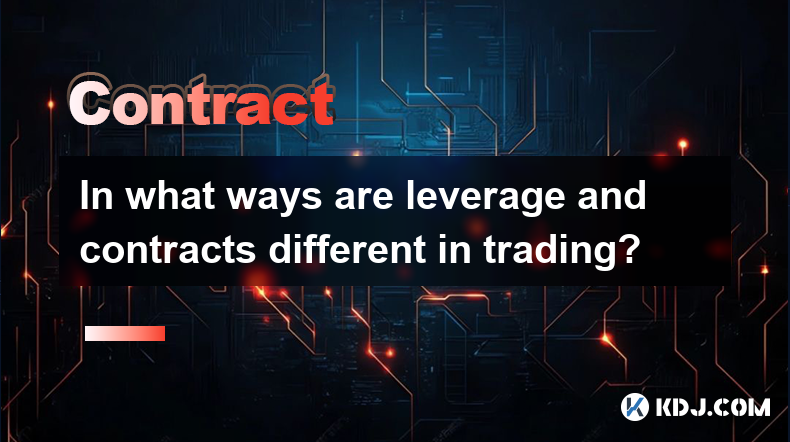
Leverage and contracts are two fundamental concepts in cryptocurrency trading that, while related, serve different purposes and have distinct characteristics. Understanding the differences between them is crucial for any trader looking to navigate the volatile crypto markets effectively. This article will delve into the specifics of leverage and contracts, exploring their definitions, how they function in trading, and the risks and benefits associated with each. By the end, readers will have a comprehensive understanding of how these tools can be used to enhance trading strategies within the cryptocurrency circle.
What is Leverage in Cryptocurrency Trading?
Leverage in cryptocurrency trading refers to the use of borrowed funds to increase the potential return on an investment. It allows traders to open larger positions than their actual capital would permit. For example, with a leverage ratio of 10:1, a trader can control a position worth $10,000 with just $1,000 of their own money. This amplifies both potential gains and losses, making leverage a double-edged sword.
Leverage is typically provided by trading platforms or brokers, who lend the additional funds needed to open larger positions. The amount of leverage available can vary widely, from 2:1 to 100:1 or even higher in some cases. It's important for traders to understand that while leverage can magnify profits, it also increases the risk of significant losses, especially in the highly volatile crypto markets.
How Does Leverage Work in Crypto Trading?
When using leverage in crypto trading, traders must first deposit a margin, which is a percentage of the total position value. This margin acts as collateral for the borrowed funds. If the market moves against the trader's position, they may receive a margin call, requiring them to deposit additional funds to maintain the position or face liquidation.
Here's how leverage works in practice:
- Choose a Leverage Ratio: Traders select a leverage ratio based on their risk tolerance and trading strategy.
- Deposit Margin: A portion of the trader's capital is used as margin to open the leveraged position.
- Open Position: The trader can now control a larger position than their initial capital would allow.
- Monitor and Manage: Traders must closely monitor their positions, as price movements can quickly lead to margin calls or liquidations.
What are Contracts in Cryptocurrency Trading?
Contracts in cryptocurrency trading refer to agreements between two parties to buy or sell a specific amount of a cryptocurrency at a predetermined price and date. These contracts can take various forms, such as futures, options, and swaps, each with its own set of rules and applications.
Futures contracts, for instance, obligate the buyer to purchase and the seller to sell a specified amount of cryptocurrency at a future date and price. Options contracts, on the other hand, give the buyer the right, but not the obligation, to buy or sell the underlying asset at a set price before the contract expires. Swaps involve exchanging cash flows or other financial instruments based on the performance of a cryptocurrency.
How Do Contracts Work in Crypto Trading?
Contracts in crypto trading are used to hedge against price volatility, speculate on future price movements, or gain exposure to cryptocurrencies without owning them directly. Here's a breakdown of how different types of contracts work:
- Futures Contracts: Traders enter into an agreement to buy or sell a cryptocurrency at a future date and price. These are commonly used for hedging and speculation.
- Options Contracts: Traders purchase the right to buy (call option) or sell (put option) a cryptocurrency at a set price before the contract expires. Options are useful for managing risk and capitalizing on market movements.
- Swaps: Traders exchange cash flows or other financial instruments based on the performance of a cryptocurrency. Swaps can be used to manage risk or gain exposure to crypto markets.
Key Differences Between Leverage and Contracts
While both leverage and contracts are used in cryptocurrency trading, they serve different purposes and have distinct characteristics. Here are the key differences:
- Purpose: Leverage is used to amplify trading positions and potential returns, while contracts are used for hedging, speculation, and gaining exposure to cryptocurrencies.
- Mechanism: Leverage involves borrowing funds to increase position size, whereas contracts are agreements between parties to buy or sell assets at a future date and price.
- Risk and Reward: Leverage can lead to significant gains or losses due to the amplified exposure, while contracts can limit risk through hedging and provide flexibility in trading strategies.
- Types: Leverage is a straightforward concept with varying ratios, while contracts come in different forms such as futures, options, and swaps, each with unique features and applications.
Risks and Benefits of Using Leverage in Crypto Trading
Using leverage in cryptocurrency trading comes with both potential benefits and significant risks. Here's a closer look at each:
Benefits:
- Increased Potential Returns: Leverage allows traders to control larger positions, potentially leading to higher profits if the market moves in their favor.
- Access to Larger Markets: With leverage, traders can participate in markets that would otherwise be out of reach due to capital constraints.
- Flexibility: Leverage can be adjusted based on market conditions and trading strategies, providing flexibility in managing positions.
Risks:
- Amplified Losses: Just as leverage can amplify gains, it can also magnify losses, leading to significant financial setbacks.
- Margin Calls and Liquidation: If the market moves against a leveraged position, traders may face margin calls or forced liquidation, resulting in the loss of their entire investment.
- Increased Volatility: The crypto market is inherently volatile, and using leverage can exacerbate the impact of price swings, making it a high-risk strategy.
Risks and Benefits of Using Contracts in Crypto Trading
Contracts in cryptocurrency trading also come with their own set of risks and benefits. Here's an overview:
Benefits:
- Hedging: Contracts like futures and options can be used to hedge against price volatility, protecting traders from adverse market movements.
- Speculation: Traders can use contracts to speculate on future price movements without owning the underlying asset, potentially leading to profits.
- Flexibility: Contracts offer various strategies for managing risk and capitalizing on market opportunities, providing traders with flexibility in their approach.
Risks:
- Complexity: Contracts can be complex financial instruments, requiring a deep understanding of their mechanics and associated risks.
- Counterparty Risk: There is always the risk that the other party in a contract may default, leading to potential losses.
- Market Risk: Even with contracts, traders are exposed to market risk, and price movements can lead to losses if not managed properly.
How to Use Leverage and Contracts Effectively in Crypto Trading
To use leverage and contracts effectively in cryptocurrency trading, traders must adopt a strategic approach that balances potential rewards with the inherent risks. Here are some tips for using these tools effectively:
- Understand the Risks: Before using leverage or contracts, traders should thoroughly understand the risks involved and ensure they are comfortable with the potential for significant losses.
- Start Small: Beginners should start with small positions and gradually increase their exposure as they gain experience and confidence.
- Use Stop-Loss Orders: Implementing stop-loss orders can help manage risk by automatically closing positions if the market moves against them.
- Diversify: Diversifying across different assets and strategies can help mitigate risk and improve overall trading performance.
- Stay Informed: Keeping up with market news and trends is crucial for making informed trading decisions and adjusting strategies as needed.
Common Questions About Leverage and Contracts in Crypto Trading
Q: What is the difference between leverage and margin in crypto trading?
A: Leverage and margin are related but distinct concepts in crypto trading. Leverage refers to the use of borrowed funds to increase the size of a trading position, while margin is the amount of capital required to open and maintain a leveraged position. Margin acts as collateral for the borrowed funds, and if the market moves against the position, traders may need to add more margin to avoid liquidation.
Q: Can I use leverage and contracts together in crypto trading?
A: Yes, traders can use leverage and contracts together in crypto trading. For example, a trader might use leverage to open a larger futures contract position, amplifying potential returns. However, combining these tools increases the complexity and risk of the trading strategy, so it's important to approach with caution and a solid understanding of both concepts.
Q: What are the most common types of contracts used in crypto trading?
A: The most common types of contracts used in crypto trading are futures, options, and swaps. Futures contracts are agreements to buy or sell a cryptocurrency at a future date and price, commonly used for hedging and speculation. Options contracts give the buyer the right, but not the obligation, to buy or sell a cryptocurrency at a set price before the contract expires. Swaps involve exchanging cash flows or other financial instruments based on the performance of a cryptocurrency.
Q: How can I manage the risks associated with using leverage in crypto trading?
A: Managing the risks associated with using leverage in crypto trading involves several strategies. Traders should start with small positions, use stop-loss orders to limit potential losses, diversify their trading portfolio, and stay informed about market conditions. It's also crucial to understand the leverage ratio and the amount of margin required to maintain positions, as well as being prepared for potential margin calls and liquidations.
Q: What are the benefits of using contracts in crypto trading?
A: The benefits of using contracts in crypto trading include the ability to hedge against price volatility, speculate on future price movements without owning the underlying asset, and gain flexibility in managing risk and capitalizing on market opportunities. Contracts like futures and options can provide traders with tools to protect their investments and potentially profit from market movements, making them valuable instruments in a trader's toolkit.
Disclaimer:info@kdj.com
The information provided is not trading advice. kdj.com does not assume any responsibility for any investments made based on the information provided in this article. Cryptocurrencies are highly volatile and it is highly recommended that you invest with caution after thorough research!
If you believe that the content used on this website infringes your copyright, please contact us immediately (info@kdj.com) and we will delete it promptly.
- VanEck Has Made a Big Move in Bringing a Binance Coin BNB/USD ETF to the United States
- 2025-04-04 02:25:12
- 3 Low-Cap Altcoins with Insane Potential in 2025: Dawgz AI ($DAGZ), Render (RNDR), and Sei (SEI)
- 2025-04-04 02:25:12
- A major Solana ($SOL) whale has returned to the spotlight after transferring substantial funds to Binance in two separate batches.
- 2025-04-04 02:20:11
- The U.S. Senate Banking Committee has voted to approve Paul Atkins' nomination for the role of Chair of the Securities and Exchange Commission (SEC).
- 2025-04-04 02:20:11
- Pepe Coin (PEPE) Demonstrates Remarkable Growth
- 2025-04-04 02:15:12
- We Asked AI to Predict Litecoin (LTC) Price in Q2 2025 Following Fidelity's Crypto IRA News
- 2025-04-04 02:15:12
Related knowledge

How to trade CoinEx leveraged futures?
Apr 03,2025 at 03:56am
Trading leveraged futures on CoinEx can be an exciting way to potentially amplify your profits in the cryptocurrency market. Leveraged futures allow traders to borrow funds to increase their trading position, which can lead to higher returns, but also comes with increased risk. In this article, we will guide you through the process of trading CoinEx lev...

What are the risks of KuCoin futures trading?
Apr 03,2025 at 01:14am
KuCoin futures trading offers traders the opportunity to speculate on the future price of cryptocurrencies, but it comes with its own set of risks that traders need to be aware of. Understanding these risks is crucial for anyone looking to engage in futures trading on the KuCoin platform. This article will delve into the various risks associated with Ku...
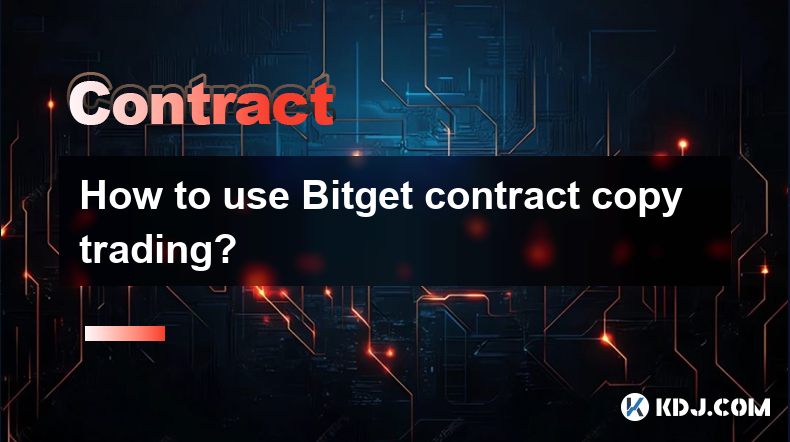
How to use Bitget contract copy trading?
Apr 03,2025 at 08:28am
Bitget's contract copy trading feature allows users to automatically replicate the trades of experienced traders, known as 'lead traders.' This can be a valuable tool for those looking to benefit from the expertise of others without having to spend time analyzing the market themselves. To start using this feature, you first need to understand how to sel...
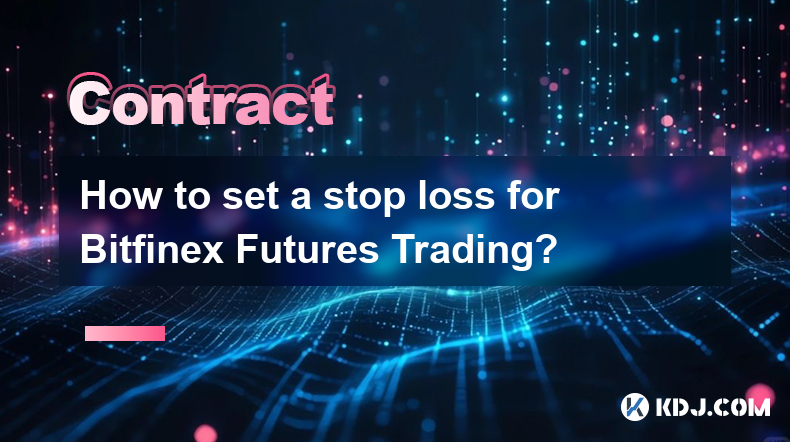
How to set a stop loss for Bitfinex Futures Trading?
Apr 03,2025 at 12:35pm
Setting a stop loss for Bitfinex Futures Trading is an essential risk management strategy that can help traders limit potential losses. A stop loss order is an instruction to sell a futures contract when it reaches a certain price, helping you to manage your exposure in volatile markets. To set a stop loss on Bitfinex, you need to navigate through the p...
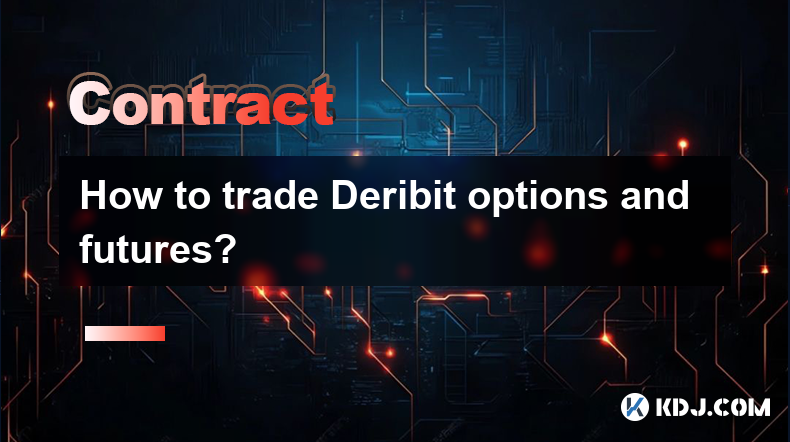
How to trade Deribit options and futures?
Apr 03,2025 at 02:00pm
Trading Deribit options and futures can be an exciting venture for those interested in the cryptocurrency market. Deribit, a leading platform for crypto derivatives, offers a variety of trading instruments including options and futures on Bitcoin and Ethereum. To successfully trade on Deribit, it's essential to understand the basics of these financial i...
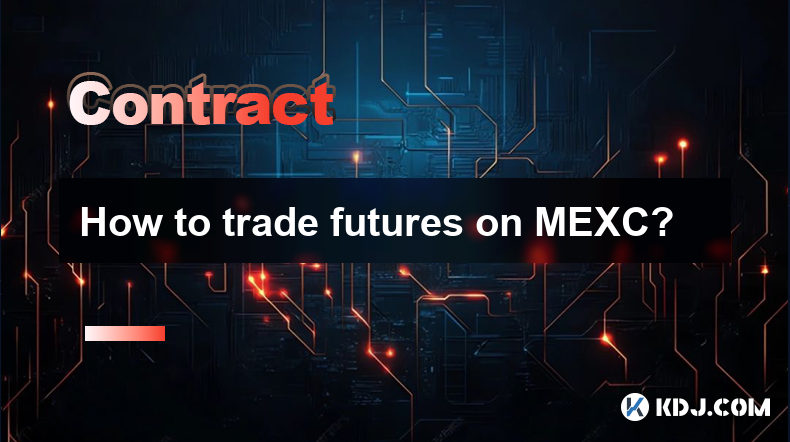
How to trade futures on MEXC?
Apr 03,2025 at 09:14pm
Trading futures on MEXC can be an exciting and potentially profitable venture for those interested in the cryptocurrency market. MEXC, a leading cryptocurrency exchange, offers a variety of futures contracts that allow traders to speculate on the future price movements of various cryptocurrencies. To successfully trade futures on MEXC, it's essential to...

How to trade CoinEx leveraged futures?
Apr 03,2025 at 03:56am
Trading leveraged futures on CoinEx can be an exciting way to potentially amplify your profits in the cryptocurrency market. Leveraged futures allow traders to borrow funds to increase their trading position, which can lead to higher returns, but also comes with increased risk. In this article, we will guide you through the process of trading CoinEx lev...

What are the risks of KuCoin futures trading?
Apr 03,2025 at 01:14am
KuCoin futures trading offers traders the opportunity to speculate on the future price of cryptocurrencies, but it comes with its own set of risks that traders need to be aware of. Understanding these risks is crucial for anyone looking to engage in futures trading on the KuCoin platform. This article will delve into the various risks associated with Ku...

How to use Bitget contract copy trading?
Apr 03,2025 at 08:28am
Bitget's contract copy trading feature allows users to automatically replicate the trades of experienced traders, known as 'lead traders.' This can be a valuable tool for those looking to benefit from the expertise of others without having to spend time analyzing the market themselves. To start using this feature, you first need to understand how to sel...

How to set a stop loss for Bitfinex Futures Trading?
Apr 03,2025 at 12:35pm
Setting a stop loss for Bitfinex Futures Trading is an essential risk management strategy that can help traders limit potential losses. A stop loss order is an instruction to sell a futures contract when it reaches a certain price, helping you to manage your exposure in volatile markets. To set a stop loss on Bitfinex, you need to navigate through the p...

How to trade Deribit options and futures?
Apr 03,2025 at 02:00pm
Trading Deribit options and futures can be an exciting venture for those interested in the cryptocurrency market. Deribit, a leading platform for crypto derivatives, offers a variety of trading instruments including options and futures on Bitcoin and Ethereum. To successfully trade on Deribit, it's essential to understand the basics of these financial i...

How to trade futures on MEXC?
Apr 03,2025 at 09:14pm
Trading futures on MEXC can be an exciting and potentially profitable venture for those interested in the cryptocurrency market. MEXC, a leading cryptocurrency exchange, offers a variety of futures contracts that allow traders to speculate on the future price movements of various cryptocurrencies. To successfully trade futures on MEXC, it's essential to...
See all articles






















































































